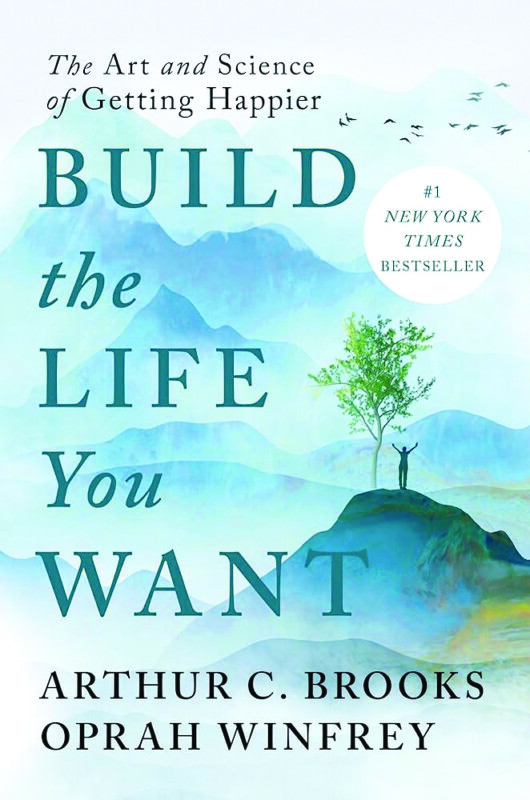Jonathan Abernathy is an unemployed college dropout, age 25, with no prospects for anything getting better — his “loans, IOUs, and bills so diverse ecologists would be within their jurisdiction to classify the collection as an ‘ecosystem.’”
He has a quarter of a million dollars in student loan debt (“with an APR so lethal it can kill within a week”) and inherited credit card debt from his parents “in the low six figures.”
Living in a basement apartment not much wider than the length of his body, Abernathy is so profoundly miserable that he is envious of his landlord going to work — “going somewhere where someone will tell her what to do. Then in exchange for this, they will give her money. Jonathan Abernathy would like to be told what to do in exchange for money.”
This is the set-up of Molly McGhee’s glorious debut novel, which paints a dystopian picture of what is commonly called late-stage capitalism and its effect on America’s underachieving young adults. Other than the misery of young people saddled with soul-crushing debt, there is little realism here, however. Abernathy lives in a world in which “dream auditors” infiltrate the dreams of sleeping citizens, this being possible because it has been discovered that “humanity shares a consciousness while it sleeps.”
People who are chosen to be dream auditors don special clothes and wander about the dreams of troubled sleepers, cleaning out the nightmarish stuff so that the person can sleep better and therefore be more productive at work — all the better for the economy. The service is much in demand by companies whose workforces “seem depleted.”
In this strange world, Jonathan Abernathy is recruited for an auditing job — appropriately enough, during his sleep. He’s desperate for the job because the alternative is selling hot dogs off a food truck, and this new job promises $20 a night (though, sadly, no health care) plus incremental student loan forgiveness and a temporary freeze on collections while he is employed.
So he’s grateful to have work, even if it’s strange and his co-worker/mentor, Kai, is even stranger. She is one of three women who populate Abernathy’s life, the others being his landlord, Kelly, and his neighbor, Rhoda, a single mother who always smells of pine and is in desperate circumstances of her own and, astonishingly, seems interested in him. Their relationship deepens as Jonathan becomes more entrenched in his job and continues with it despite troubling signs that everything might not turn out OK in the end, for anyone involved.
That is not a spoiler — the book begins even more ominously, with the line “Though it will take three years, from this moment, for death to act, Jonathan Abernathy will never live a life unmarked again. Death will be tethered to him as a shadow.” There are also some Jacob Marley-esque apparitions on the book’s cover.
Why read something that’s such a downer, especially during the holiday season? It’s a fair question, but in a world saturated with formulaic books, this is not one. Poor doomed Jonathan Abernathy, who earnestly recites affirmations to keep his spirits up (Jonathan Abernathy, you are strong! Jonathan Abernathy, you are brave! Jonathan Abernathy, there is nothing in life not meant for you!) gets our sympathy in part because McGhee convincingly paints him as a helpless pawn in the cold capitalist machine, and also because he is an orphan, both parents having died by suicide. These are odds not just stacked against him, but malevolently working to ruin him, as his new employer also seems to be.
At the same time, Abernathy has a sweet optimism that exists because of his willful oblivion. He wants to be a good person; he wants to be a good worker; he wants to be needed at work. (“He anticipates the feeling of being needed with the same fervor that he looks forward to arriving at a destination with air-conditioning after a long heat-soaked walk.”) But as it turns out, you can’t affirm yourself out of terrible things that have happened in the past, both your own, and that of people you know. And we keep reading, because we care about Jonathan Abernathy, and honestly, just want to know what happens to him. Closure matters.
This is McGhee’s first novel; she was working in a publishing house as she wrote it, and as such, the novel is polished in a way that some debut efforts aren’t. You can tell when someone spends their days immersed in words. You can also tell when someone is disillusioned with capitalism, as McGhee, like many of her generation, appears to be. She equates work with dreams, writing, “To work and to dream is to forget.” In this world, work is the merciless maw that consumes our hours, leaving precious little of the meaningful stuff. Is it preachy at times, and a bit too single-minded in insisting that Abernathy is a victim, devoid of any agency in his life? Of course. Is it also a book you will think about long after you’ve lent it to friends? That, too. B+






